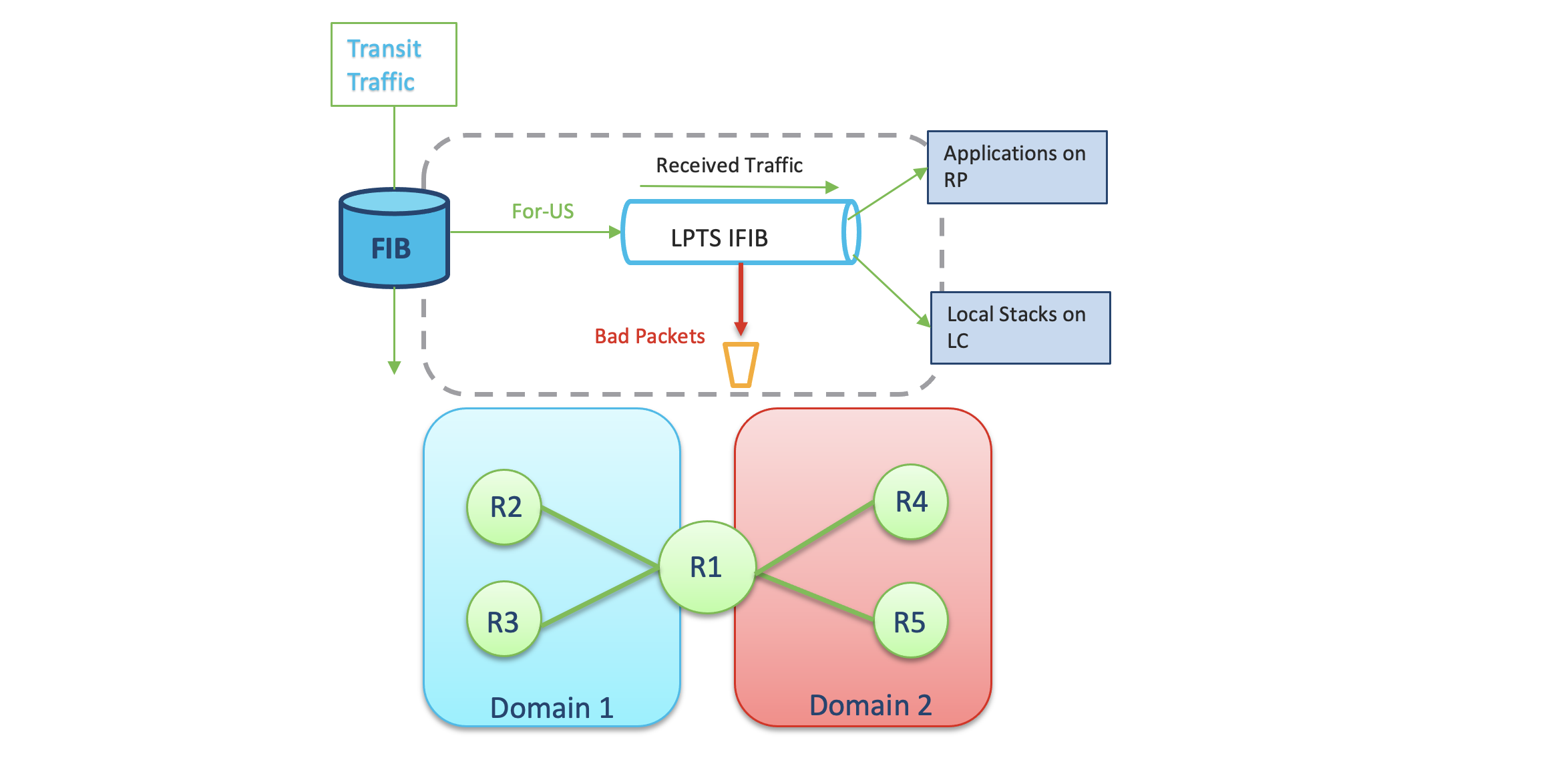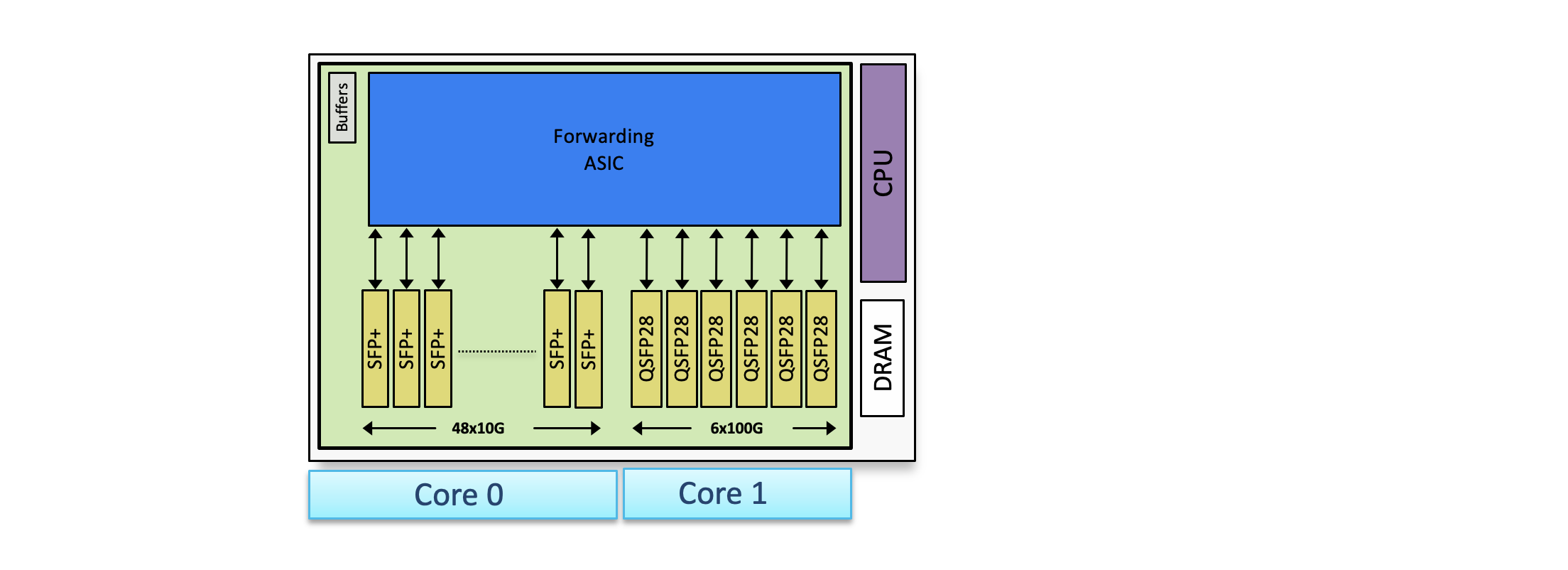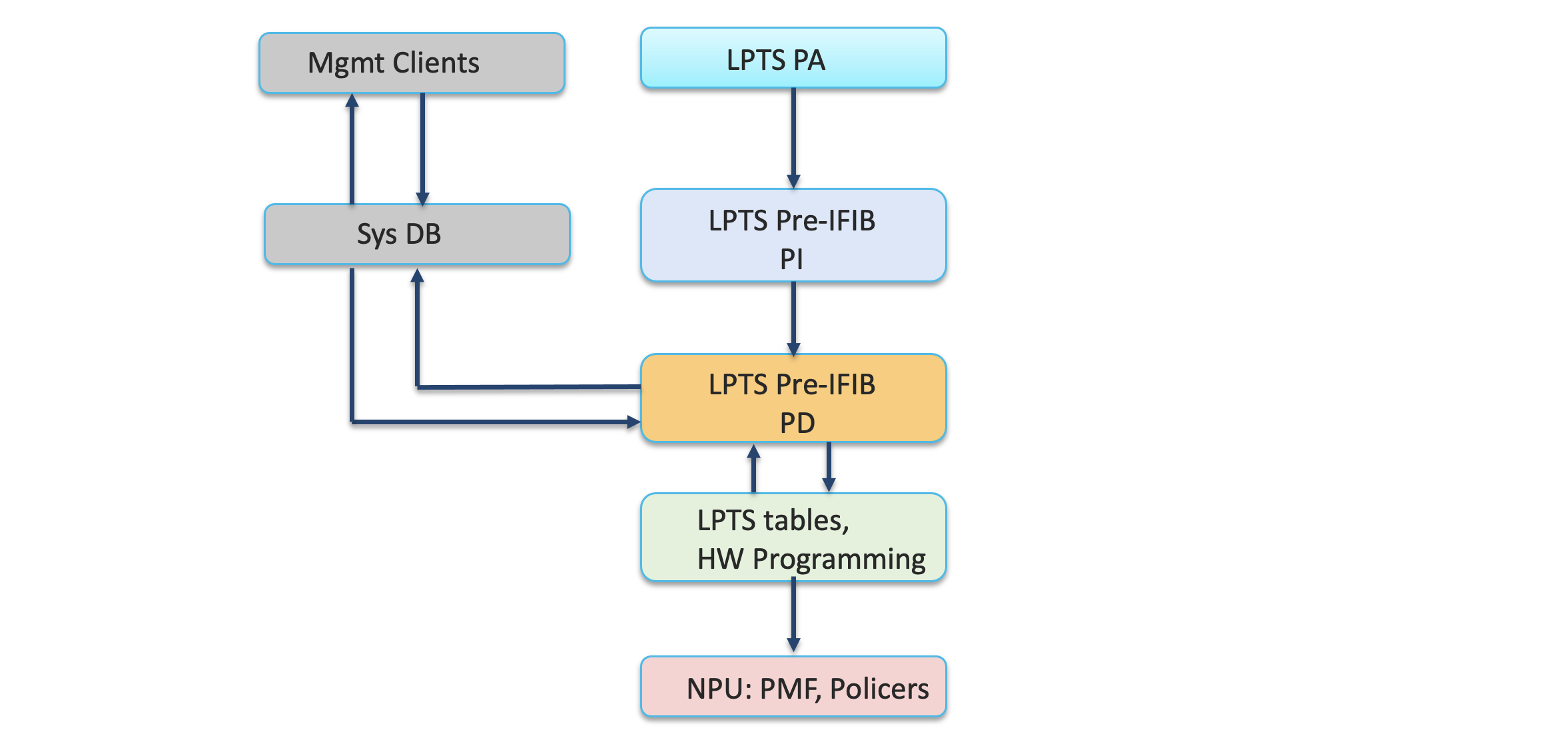NCS55x and NCS5xx Domain Based LPTS Policers
Introduction
It has been a while since we wrote the first article on LPTS. There we introduced the concept of LPTS and how it is implemented on NCS55xx and NCS5xx family of routers. We also saw with examples how LPTS entries are created in the hardware and how they can be altered as per different requirements. In this document we will explore Domain based LPTS Policers and understand the use case of the feature.

Problem Definition
The usual LPTS implementation treats the traffic in a single domain and packet rate is controlled via single LPTS policer profile. Policer is implemented per flow-type which is classified by LPTS. But customer needs more granular control for LPTS configuration. They require to have separate policer values for different ports in the router. Some LCs in ASR9K support per NPU LPTS policer profiles, where for a set of ports under 1 NPU, a different policer profile can be defined. But the disadvantage is that again we do not have granularity per port. All the ports in the same NPU have to adhere the same LPTS policer defined. What if we want to have different policer for interfaces in the same NPU. Therefore on NCS55xx and NCS5xx we have the provision to achieve separate policer profiles for a set of ports or domain. Domain would be logical grouping of ports. Domains will provide the capability to select LPTS policer profile independently for the defined domains. This will provide better control of the ingress packets in the router.
Advantages of using per domain LPTS

Let us take an example of NCS 5501. It has 48 1G/10G ports and 6 40G/100G ports. The first set of ports are located in core 0 and second set in core 1. The advantage of using per domain LPTS are:
- We can use existing concept of known/default policers
- Per port resources are available on NCS55xx and NCS5xx
- It strengthens the existing security plus gives added granularity
- Domain creates individual isolation of ports (e.g VRF)
- This can scale even with just having internal TCAM
Note: By default all the ports will be classified in default domain if no user defined domain is configured.
Domain Based LPTS Architecture

The above figure represents the architecture of the domain based LPTS. For understanding of the terminology like port arbitrator, Pre-iFIB, iFIB etc and the basic flow of LPTS, it is highly recommended to read this Article. As per the flow described in that artcile, first the entries are downloaded in LPTS Pre-IFIB. LPTS HW Pre-iFIB creates/updates/delete with domain index in the key of Pre-iFIB entry. LPTS domain and its associated interfaces are added/deleted to update port variable of interfaces. LPTS HW Policer is updated or programmed for a specific flow type under a specific LPTS domain index. LPTS Pre-iFIB PD does hardware programming of Domain based policers and HW Pre-iFIB entries to database table. LPTS Pre-iFIB then programs PMF, policer and port variable. Management client access the Pre-iFIB HW entry or policer data via the SysDB.
Sample Use Case

For example take the above network. Customer has logically partioned the network into 2 domains i.e. core and peering. NCS5500 has its interfaces in both the domain’s. The core domain needs the BGP-known control packets to be policed at a different rate than the peering domain. To achieve this, concept of domain space partition in LPTS for the ports is very useful. It helps to utilize the port orientation in the network and will enable separate controllable policer profile per domain.
Below output shows the default policer value under default domain for BGP-known
RP/0/RP0/CPU0:R1#show lpts pifib hardware police location all | in BGP
Tue Feb 2 18:13:04.100 UTC
BGP-known 32116 Static 2500 2975 0 0-default
BGP-cfg-peer 32117 Static 2000 2000 0 0-default
BGP-default 32118 Static 100 8 0 0-default
Below are some of the hardware entries programmed under default domain.

Now let us configure one interface under the domain core and we will leave the peering domain as default domain and see how it impacts the values and programming
lpts pifib hardware domain core
interface TenGigE0/0/0/0
!
lpts pifib hardware police
domain core
flow bgp known rate 2000
!
!
RP/0/RP0/CPU0:R1#show lpts pifib hardware police location all | in BGP
Tue Feb 2 18:44:46.931 UTC
BGP-known 32116 Static 2500 2975 0 0-default
BGP-cfg-peer 32117 Static 2000 2000 0 0-default
BGP-default 32118 Static 100 8 0 0-default
BGP-known 32216 Global 2000 2398 0 1-core
RP/0/RP0/CPU0:R1#

We can see 2 different entries are created. One in default domain and other in the core domain.
Note: The duplicate entries created cause just a marginal increase in the memory consumption. Hence to optimise the memory resources, we are allowing to create only one user configured domain.
Feature Support
- Domain configuration is supported only on physical and bundle main interfaces.
- The configuration will be rejected if we apply on sub-interfaces.
- Domain name can be any word but can have up to a maximum of 32 characters
- Only 1 user configured domain is allowed along with default domain.
- The policer rates that are configured for ports or line cards will have policer rates of the domain after configuring the ports or line cards as part of a domain. For example, if port hundredGigE 0/0/0/1 and port hundredGigE 0/0/0/2 have policer rate of 3000 for ospf unicast known flow and if the ports are configured as part of domain CORE, then the policer rate of domain CORE for ospf unicast known flow is 3000 unless it is configured otherwise
- User can configure a particular port, a group of ports, or a line card of a router with LPTS policers of a single domain.
- It is supported on NCS540/NCS560 and NCS5500(J/J+/J2).
Memory Impact
There would be a slight increase in memory for pifibm_server_rp/lc process due to this functionality. Some heap memory would be utilized in keeping the domain states and for caching the entries within the process which would be dynamically updated into platform as and when needed. For normal programming of entries some extra checks on the entries would be added if this functionality is enabled to ensure domain information population. Overall in normal flow there would be very less impact while programming TCAM entries. With any configuration change there would be control plane churn as TCAM reprogramming is triggered. The TCAM entries in hardware would depend on the configuration used for ports and the scale of L3-routable entries (as L3 entries gets duplicated if additional domain is configured).
Conclusion
Hope this technote helped to understand the NCS55xx and NCS5xx capability to configure single port/ports or LC into a single domain and separate it from the default domain. This helps in increased security and granularity. Though the memory occupied is a bit more as duplicate entries are created but that doesnt have much of operating issues.
Leave a Comment